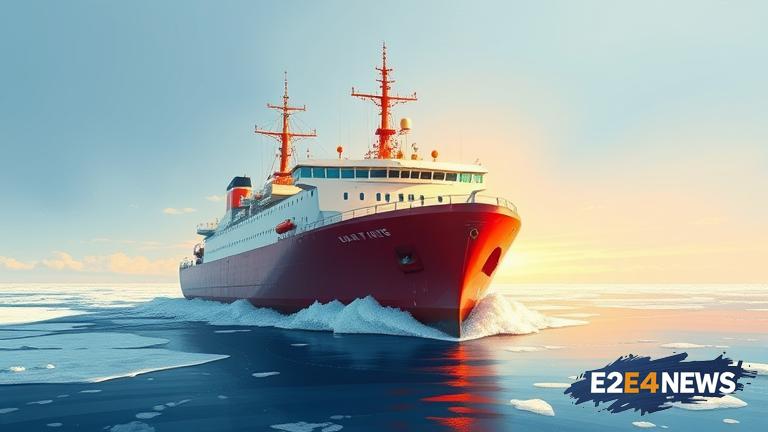The Arctic region is experiencing a significant transformation due to climate change, with melting ice caps and increasing access to new shipping routes. This has sparked interest among business leaders, who are eyeing the potential economic benefits of investing in icebreakers. The development of new icebreakers is expected to play a crucial role in the future of Arctic trade, enabling the transportation of goods and resources through the region. The Arctic is rich in natural resources, including oil, gas, and minerals, and the construction of icebreakers will facilitate the extraction and transportation of these resources. Furthermore, the melting of sea ice is creating new opportunities for maritime trade, with the Northern Sea Route and the Northwest Passage becoming increasingly viable options. The use of icebreakers will enable ships to navigate these routes, reducing travel time and increasing the efficiency of trade. Business leaders are also considering the potential for tourism and cruise ship traffic in the Arctic, which could bring significant economic benefits to the region. However, the development of icebreakers also raises concerns about the environmental impact of increased shipping activity in the Arctic. The construction of icebreakers will require significant investment, but it is expected to create new job opportunities and stimulate economic growth in the region. The Arctic Council, which comprises eight Arctic nations, is working to develop guidelines and regulations for the use of icebreakers in the region. The council is also promoting cooperation and collaboration among member nations to ensure the safe and sustainable development of the Arctic. In addition to the economic benefits, the development of icebreakers will also have significant geopolitical implications. The Arctic region is becoming increasingly important strategically, with several nations competing for influence and access to the region’s resources. The construction of icebreakers will enable nations to project power and assert their interests in the region. The United States, Russia, and China are among the nations that are investing heavily in the development of icebreakers. The use of icebreakers will also require significant investment in infrastructure, including ports and shipping facilities. The development of icebreakers is expected to have a major impact on the environment, with concerns about pollution, habitat destruction, and climate change. Despite these challenges, the development of icebreakers is seen as a crucial step in the development of the Arctic region, enabling the extraction and transportation of resources and promoting economic growth. The future of icebreakers in the Arctic is uncertain, but it is clear that they will play a significant role in the region’s development. As the Arctic continues to warm and the ice caps melt, the use of icebreakers will become increasingly important. The development of new technologies and innovations will be crucial in reducing the environmental impact of icebreakers and ensuring their safe and sustainable use. In conclusion, the development of icebreakers is a critical component of the future of Arctic trade and economic development. Business leaders are eyeing the potential economic benefits of investing in icebreakers, and nations are competing for influence and access to the region’s resources. The use of icebreakers will require significant investment in infrastructure and will have significant geopolitical implications. Despite the challenges, the development of icebreakers is seen as a crucial step in the development of the Arctic region, enabling the extraction and transportation of resources and promoting economic growth.





